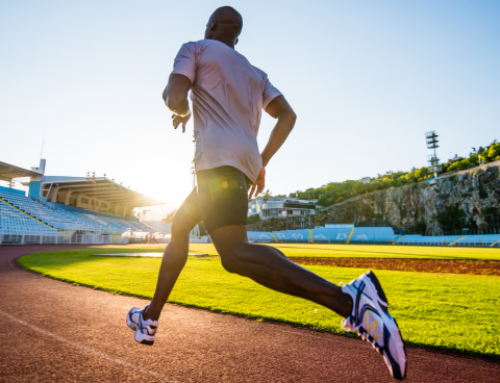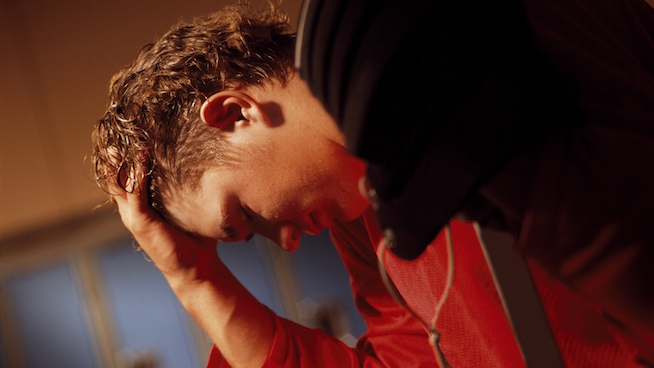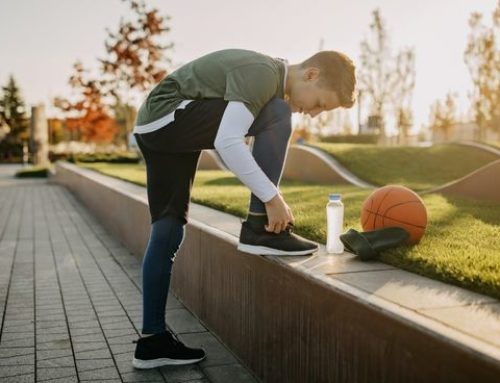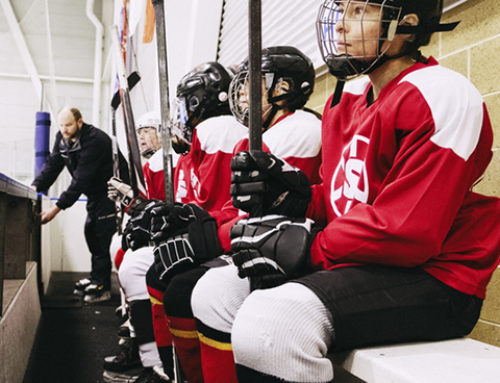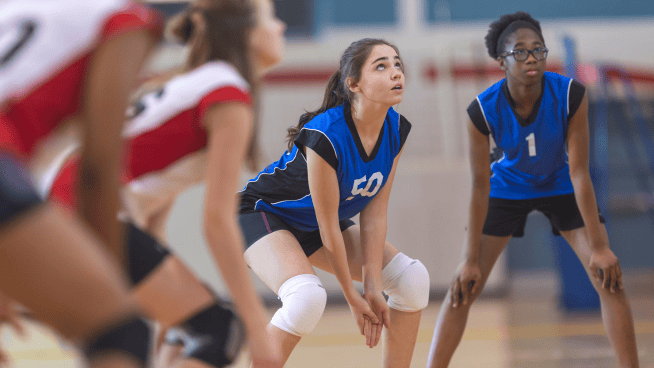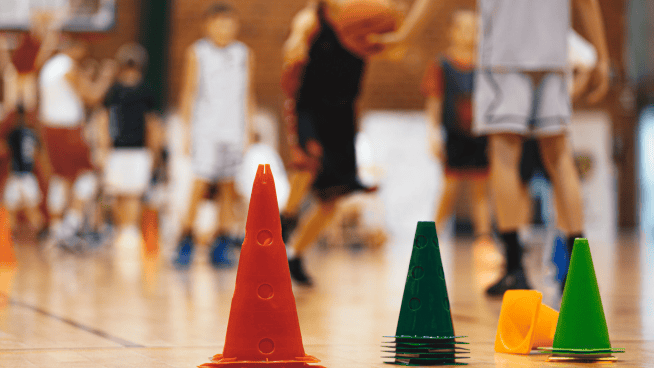Mike Boyle’s Conditioning Rule for Athletes
With an endless parade of practices and games, many modern young athletes have no issue staying in “game shape.”
What they often miss out on are opportunities to develop true speed, strength and power.
So why, when they might only have one or two precious hours a week to train, should we spend a sizable chunk of that time putting them through traditional aerobic conditioning-type work?
Renowned sports performance trainer Mike Boyle, owner of Mike Boyle Strength and Conditioning, believes we shouldn’t.
“We don’t do very much conditioning, particularly with our younger kids,” says Boyle. He points to his teenage son, Mark, a hockey and lacrosse player, as an example of why that training time is better spent elsewhere.
“My son, in a typical week, will play four or five games on the weekend, then have two practices during the week, then go to one captain’s practice a week. So you’re talking about seven sort of low-to-moderate intensity, aerobic-type exposures. I look and think, do I need to create more of that in our strength and conditioning program?” says Boyle.
“We’ve basically gone to the thing now where if you have some sort of hour practice, workout, skating session, whatever it is, that (same) day, then we don’t do any conditioning at all. It’s just speed, strength and power all the time, then let the conditioning bucket get filled up by somebody else who’s running you around or skating you around at practice.”
Boyle raises an excellent point, particularly for team sport athletes. Overdoing conditioning and under-addressing speed is incredibly common for that population, particularly at the high school level. The result is often athletes who are great at jogging while tired, but whose top speeds are middling at best.
“In a lot of ways, (more conditioning work) is further taxing the system in a way that’s probably not beneficial,” Boyle says.
Additionally, increasing your top speed is actually one of the best ways to outplay your opponent during crunch time. It’s all about the idea of “speed reserve.”
When your top speed increases, so does your speed reserve. Suddenly, what once represented 80% of your top speed might now represent 70%. Thus, the energy demands to achieve and maintain that speed are significantly reduced.
This graphic from SprintCoach.com’s Derek Hansen is a great visual of the concept:
Carolina Panthers All-Pro running back Christian McCaffrey says reducing his training volume and prioritizing his top-end speed this offseason left him feeling both faster and better-conditioned than ever.
“It’s obviously important to have a little speed endurance in football, but I’ve learned when I really condition myself hard, I feel myself kinda getting slower. And I’ll probably rub a lot of trainers wrong saying that. But I started doing (this) last year, and I can honestly say there were very few times I felt tired during a game,” says McCaffrey, whose 326 total touches ranked third in the NFL last season. “I’ve tried everything. I feel like when I do (this), that’s when I feel the best.”
If young athletes are consistently playing games or attending well-designed practices, those are the most “sport-specific” form of conditioning they can be exposed to.
For kids who come in a week before the season starts after spending the last three months on the couch? Conditioning absolutely makes sense. But for team sport athletes who are already being run ragged by sports coaches, dedicating significant time to aerobic conditioning during their training at the sacrifice of time spent on speed, strength and power generally seems misguided.
Photo Credit: jacoblund/iStock
READ MORE:
RECOMMENDED FOR YOU
MOST POPULAR
Mike Boyle’s Conditioning Rule for Athletes
With an endless parade of practices and games, many modern young athletes have no issue staying in “game shape.”
What they often miss out on are opportunities to develop true speed, strength and power.
So why, when they might only have one or two precious hours a week to train, should we spend a sizable chunk of that time putting them through traditional aerobic conditioning-type work?
Renowned sports performance trainer Mike Boyle, owner of Mike Boyle Strength and Conditioning, believes we shouldn’t.
“We don’t do very much conditioning, particularly with our younger kids,” says Boyle. He points to his teenage son, Mark, a hockey and lacrosse player, as an example of why that training time is better spent elsewhere.
“My son, in a typical week, will play four or five games on the weekend, then have two practices during the week, then go to one captain’s practice a week. So you’re talking about seven sort of low-to-moderate intensity, aerobic-type exposures. I look and think, do I need to create more of that in our strength and conditioning program?” says Boyle.
“We’ve basically gone to the thing now where if you have some sort of hour practice, workout, skating session, whatever it is, that (same) day, then we don’t do any conditioning at all. It’s just speed, strength and power all the time, then let the conditioning bucket get filled up by somebody else who’s running you around or skating you around at practice.”
Boyle raises an excellent point, particularly for team sport athletes. Overdoing conditioning and under-addressing speed is incredibly common for that population, particularly at the high school level. The result is often athletes who are great at jogging while tired, but whose top speeds are middling at best.
“In a lot of ways, (more conditioning work) is further taxing the system in a way that’s probably not beneficial,” Boyle says.
Additionally, increasing your top speed is actually one of the best ways to outplay your opponent during crunch time. It’s all about the idea of “speed reserve.”
When your top speed increases, so does your speed reserve. Suddenly, what once represented 80% of your top speed might now represent 70%. Thus, the energy demands to achieve and maintain that speed are significantly reduced.
This graphic from SprintCoach.com’s Derek Hansen is a great visual of the concept:
Carolina Panthers All-Pro running back Christian McCaffrey says reducing his training volume and prioritizing his top-end speed this offseason left him feeling both faster and better-conditioned than ever.
“It’s obviously important to have a little speed endurance in football, but I’ve learned when I really condition myself hard, I feel myself kinda getting slower. And I’ll probably rub a lot of trainers wrong saying that. But I started doing (this) last year, and I can honestly say there were very few times I felt tired during a game,” says McCaffrey, whose 326 total touches ranked third in the NFL last season. “I’ve tried everything. I feel like when I do (this), that’s when I feel the best.”
If young athletes are consistently playing games or attending well-designed practices, those are the most “sport-specific” form of conditioning they can be exposed to.
For kids who come in a week before the season starts after spending the last three months on the couch? Conditioning absolutely makes sense. But for team sport athletes who are already being run ragged by sports coaches, dedicating significant time to aerobic conditioning during their training at the sacrifice of time spent on speed, strength and power generally seems misguided.
Photo Credit: jacoblund/iStock
READ MORE:


